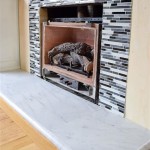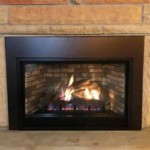How Much Does It Cost To Replace A Fireplace And Chimney Pipe?
Replacing a fireplace and chimney pipe is a significant home improvement project that can enhance both the aesthetic appeal and functionality of a home. However, it also represents a considerable financial investment. Accurately estimating the cost requires a detailed understanding of the various factors involved, including the type of fireplace, the materials used for the chimney pipe, labor expenses, and potential unforeseen complications.
The cost of replacing a fireplace and chimney pipe can range widely, typically from a few thousand dollars to tens of thousands. The specific price will depend on a number of variables, which will be examined in detail. This article provides a comprehensive overview of the key elements that influence the overall cost of this home improvement endeavor.
Fireplace Type and Cost
The type of fireplace selected has a major impact on the overall cost of the replacement project. Fireplaces can be broadly categorized into wood-burning, gas, and electric models, each with distinct installation requirements and price points.
Wood-burning fireplaces are often the most traditional and can offer a classic aesthetic. However, they typically require a more complex and robust chimney system to safely vent smoke and combustion byproducts. Replacing a wood-burning fireplace might involve significant structural modifications to the existing chimney or even the construction of a new chimney system. The cost of a new high-efficiency wood-burning fireplace unit can range from $2,000 to $6,000, while the chimney installation can add another $4,000 to $10,000 or more, depending on factors such as height, materials (masonry, stainless steel), and complexity of the installation.
Gas fireplaces offer convenience and ease of use, typically featuring instant ignition and adjustable flame settings. Installation costs are generally lower than wood-burning fireplaces, as they often require a simpler venting system. However, a gas line connection is necessary, which can add to the expense if one is not already present. The cost of a gas fireplace unit itself can range from $1,500 to $5,000, and the chimney or vent installation typically ranges from $1,000 to $4,000, depending on the complexity of the venting system and whether a new gas line needs installation.
Electric fireplaces are the simplest to install, requiring only a standard electrical outlet. They are often the most affordable option, though they may not provide the same level of ambiance as wood-burning or gas fireplaces. The cost of an electric fireplace unit can range from $200 to $2,000, and installation is usually straightforward, involving simply plugging the unit into an outlet and securing it in place. No chimney or venting is required for electric fireplaces.
Chimney Pipe Materials and Installation Costs
The choice of chimney pipe material and the complexity of its installation directly impact the overall replacement cost. The materials for chimney pipes vary, each offering different levels of durability, safety, and aesthetic appeal. Common materials include masonry, stainless steel, and prefabricated metal.
Masonry chimneys, typically constructed from brick or stone, are a traditional and durable option. However, they can be quite expensive to build or repair. Replacing a masonry chimney can involve significant structural work, including demolition of the old chimney and reconstruction with new materials. This process requires skilled masons and can be labor-intensive. The cost of replacing a masonry chimney can range from $6,000 to $20,000 or more, depending on the height, complexity, and materials used.
Stainless steel chimney liners are a popular choice for both replacing existing chimney liners and installing new chimneys for wood-burning and gas fireplaces. They are durable, corrosion-resistant, and relatively easy to install. Stainless steel liners can be either rigid or flexible, with flexible liners being suitable for navigating bends and offsets in the chimney. The cost of a stainless steel chimney liner can range from $1,000 to $5,000, depending on the diameter, length, and type of steel used. Installation typically involves inserting the liner into the existing chimney and connecting it to the fireplace flue.
Prefabricated metal chimneys are another option, particularly for new construction or when a masonry chimney is not feasible. These chimneys are typically made of double-walled or triple-walled metal and are designed to be lightweight and easy to assemble. The cost of a prefabricated metal chimney can range from $2,000 to $8,000, depending on the height, diameter, and brand. Installation involves assembling the chimney sections and securing them to the house, following the manufacturer's instructions.
In addition to the cost of the chimney pipe itself, installation costs vary depending on the complexity of the project and the labor rates in the area. Factors such as chimney height, accessibility, and any necessary modifications to the surrounding structure can all affect the installation cost. It is crucial to obtain multiple quotes from qualified contractors to ensure a fair price and a professional installation.
Labor Costs, Permits, and Other Considerations
Labor costs represent a significant portion of the overall expense of replacing a fireplace and chimney pipe. The hourly rates for skilled tradespeople such as masons, plumbers, and HVAC technicians can vary widely depending on location and experience. More complex installations or projects requiring specialized skills will naturally incur higher labor costs.
Obtaining the necessary permits is a crucial step in any fireplace and chimney replacement project. Building codes and regulations vary by municipality, and it is essential to comply with all applicable requirements. Permits typically involve a fee and may require inspections to ensure that the installation meets safety standards. Failure to obtain the necessary permits can result in fines and delays, as well as potential safety hazards.
Other costs to consider include demolition and disposal of the old fireplace and chimney, framing or structural modifications to accommodate the new fireplace, and finishing work such as drywall, paint, and trim. It is also important to factor in the cost of any necessary repairs to the surrounding area, such as the roof or walls. Unexpected problems, such as hidden structural damage or asbestos abatement, can also add to the overall cost of the project. A contingency budget of 10-15% is advisable to cover unforeseen expenses.
Furthermore, consider the long-term operational costs associated with the chosen fireplace type. Wood-burning fireplaces require ongoing expenses for firewood and chimney cleaning, while gas fireplaces incur natural gas or propane costs. Electric fireplaces have lower operational costs but may not provide the same heating efficiency. Carefully evaluating these factors will help determine the most cost-effective option for the long run.
Choosing a qualified and experienced contractor is essential for a successful fireplace and chimney replacement. Look for contractors with proper licensing, insurance, and a proven track record. Check references and read online reviews to assess the contractor's reputation and quality of work. A reputable contractor will provide a detailed estimate that includes all costs associated with the project, as well as a clear timeline for completion.
Preventative maintenance, such as regular chimney inspections and cleaning, can help extend the life of the fireplace and chimney and prevent costly repairs. Creosote buildup in wood-burning chimneys can pose a fire hazard, and regular cleaning is essential to remove this buildup. Gas fireplaces should also be inspected annually to ensure proper venting and gas line integrity. Addressing potential problems early on can prevent minor issues from escalating into major repairs.
Homeowners insurance may cover some or all of the cost of replacing a fireplace or chimney if the damage is caused by a covered peril, such as a fire or storm. However, normal wear and tear or lack of maintenance are typically not covered. It is important to review the policy carefully and consult with an insurance agent to determine the extent of coverage.
Beyond the financial investment, consider the potential return on investment (ROI) of replacing a fireplace and chimney. A new fireplace can enhance the aesthetic appeal and value of a home, making it more attractive to potential buyers. A high-efficiency fireplace can also lower heating costs and improve energy efficiency. While the ROI will vary depending on the specific circumstances, a well-designed and properly installed fireplace can be a worthwhile investment.
The decision to replace a fireplace and chimney pipe should be made after careful consideration of all the factors involved, including the cost, benefits, and long-term implications. By thoroughly researching the options, obtaining multiple quotes, and selecting a qualified contractor, homeowners can ensure a successful and cost-effective project. This meticulous planning will result in a safe and aesthetically pleasing addition to the home.

Chimney Repair Cost To Fix A Fixr

How Much Does Chimney Removal Cost

Chimney Repair Cost To Fix A Fixr

How Much Does Chimney Replacement Cost In 2024 Forbes Home

Fireplace Repair Cost To Fix Fixr

Chimney Installation Cost S Fixr

2024 Fireplace Chimney Removal Cost Stack T Demolition

How Much Does It Cost To Reline A Chimney

2024 Wood Stove Installation Cost Burning S

Fireplace Installation Cost 2024 Gas Wood Burning Electric
Related Posts








